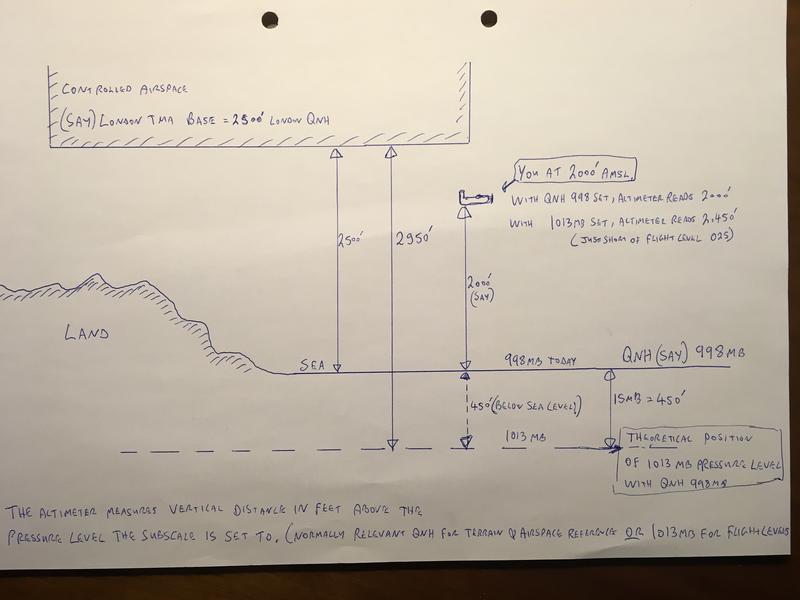Tue Jan 22, 2019 4:34 pm
#1667376
With about 18 millibars 540 feet difference between 1013 and local QNH today my trip took me from North Kent to Turweston. On the return leg with 0013 set and monitoring Luton, I hear our callsign.
The returns at Luton were showing us at 2600 - 2700 feet ( yes FL027 shown on Txpdr) and a request to descend.
Now my Altimeter and GPS altitude were varying between 2100 and 2200 feet, so well under the 2500 foot Class A.
So my question is how and when are the adjustments made in ATC for the transponder reported Flight Level to local QNH conversion, - or have I missed something and the transition Altitude is now very low and I should have been flying below flight level 025.
I am confused and interested as to what happens if I had been at 2400 feet on my local QNH and the 500 foot pressure difference showed me at 2900 - inside CAS on the transponder.
It was all very polite and I'm glad they called me, but I would like to know the science behind the Alt on my Txpdr (1013) and the local pressure altitude and why they thought I was in airspace ? Was there conversion factor wrong perhaps ?
The returns at Luton were showing us at 2600 - 2700 feet ( yes FL027 shown on Txpdr) and a request to descend.
Now my Altimeter and GPS altitude were varying between 2100 and 2200 feet, so well under the 2500 foot Class A.
So my question is how and when are the adjustments made in ATC for the transponder reported Flight Level to local QNH conversion, - or have I missed something and the transition Altitude is now very low and I should have been flying below flight level 025.
I am confused and interested as to what happens if I had been at 2400 feet on my local QNH and the 500 foot pressure difference showed me at 2900 - inside CAS on the transponder.
It was all very polite and I'm glad they called me, but I would like to know the science behind the Alt on my Txpdr (1013) and the local pressure altitude and why they thought I was in airspace ? Was there conversion factor wrong perhaps ?
Enjoy everything - Life is Short.
 FLYER Club Member
FLYER Club Member
